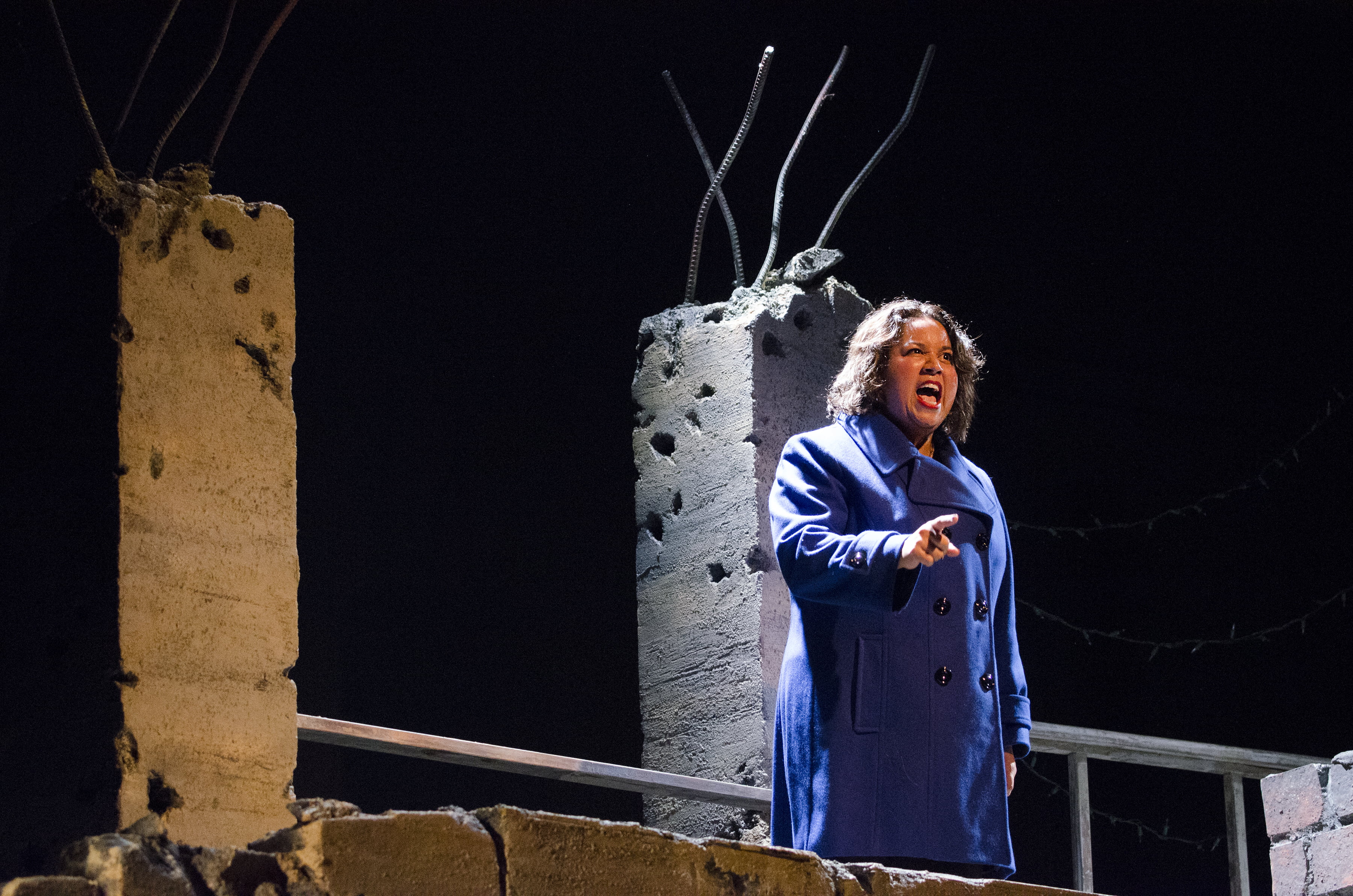One Size Does Not Fit All
A look at how costume design frames the narrative in The Happiest Song Plays Last
By Katie Maltais, Managing Director
When you see a woman walking in Louboutins, those red soles tell you a lot about who she is – or at least who she wants the world to think she is. When you see a man in a tattered sweatshirt, dirty jeans, and a safety vest with a little mud on his face, we also have a snap judgment of who he is.
Clothes allow us a window into a person’s life before we hear one word from their lips.
Costume Designer Kevin Brainerd had to create that instant understanding for each of the characters in The Happiest Song Plays Last. For seven unique characters, Kevin “psychoanalyzed” who they were, what type of clothes would fill their closets, and what they would each choose to wear for big, important moments or simple, everyday ones.
Kevin started his process by reading the play and getting some images in his head. He did some visual research through online image searches to gain an understanding of the locations in the play and fashions popular in 2011.
Once the show was cast, Kevin shifted his focus to each actor’s physical appearance and how he could dress him or her. Once rehearsals were underway, Kevin was able to work with actors directly. He shared “Actors bring things to the table to help them tell their story or reinforce choices that they make.”
For example, the character of Lefty, played by Brian Landis Folkins, is a homeless man who directs traffic around the city and comes to Yaz’s house for food and to pick up odd jobs. In Brian’s exploration of his character, he had two very specific asks of Kevin: a safety jacket and lots of pockets. Brian wanted Lefty to carry around a lot of items, like wet wipes to clean his hands after each meal.
Two of the characters, Elliot and Yaz, had established looks from previous plays in the cycle. For Yaz (played by GerRee Hinshaw), Kevin leaned on her love of jazz, formerly sophisticated lifestyle, and vibrant personality to select her look. At home, Yaz is comfortable, but when she is out in the community, Kevin felt she would select “visually arresting statement pieces.” Her cobalt blue coat for her impassioned call for protest, for example. In the summer, like in Water by the Spoonful, Yaz wears more patterns and prints, but year-round she reaches for bold colors.
One of the more interesting characters to dress was La Cantante, the roving musician played by Satya Chavez. The role wasn’t in the script; rather, the playwright asks for live music to be incorporated but gives no more details. Director Chip Walton felt that Satya was there to give a sense of cultural identity to the play so Kevin played that up in the costuming. He went for an updated version of a traditional Puerto Rican folk dance costume. Satya wears a red flower in her hair and a flowy white top, but also skinny jeans and red-ribboned ballet flats. Kevin said this take was a “riff of the Puerto Rican culture and the Puerto Rican flag, which is red, white, and blue.” Her costume being evocative of more of the traditional culture helped support the background of the show, just as her music does.
“People make judgments based on a person’s appearance and the audience will make judgments based on a character’s appearance.” Kevin’s job in this play is not only to tell the story of seven different characters but also to infuse cultural undertones to the piece.
The Happiest Song Plays Last sees a number of costuming elements, many of which the audience does not even think about, yet each one helps further the story of this family and this moment in time.

